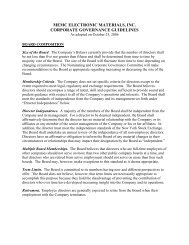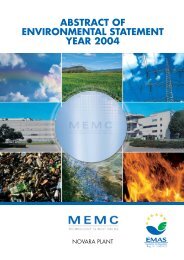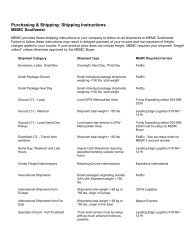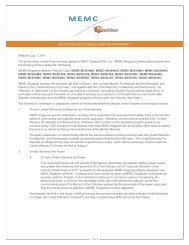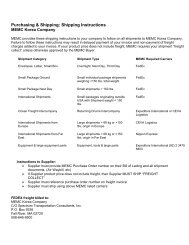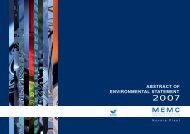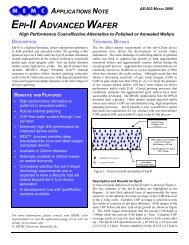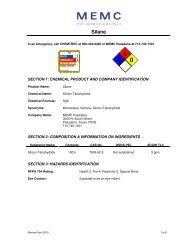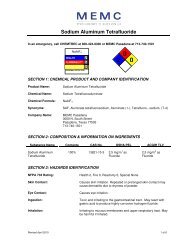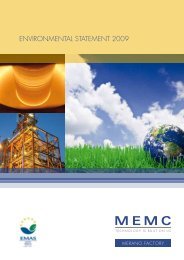BUILDING ON THE PAST, READY FOR THE FUTURE: - MEMC
BUILDING ON THE PAST, READY FOR THE FUTURE: - MEMC
BUILDING ON THE PAST, READY FOR THE FUTURE: - MEMC
You also want an ePaper? Increase the reach of your titles
YUMPU automatically turns print PDFs into web optimized ePapers that Google loves.
Monsanto’s <strong>MEMC</strong> tradeshow booth.<br />
the time spent in the early 1980s trying to get the<br />
right balance of oxygen and understanding how<br />
the wafer would behave in a customer’s device<br />
line. “We were trying to get the oxygen at just the<br />
right level so when the customer would process<br />
the wafer on the fab line, the oxygen would start<br />
to precipitate but only to a certain degree and<br />
not near the wafer surface,” he explains. “This<br />
way you maintain the mechanical strength, but<br />
the precipitates form in the bulk and not near the<br />
surface where the device is formed. An even bigger<br />
advantage of this distributed precipitation behavior<br />
is that the precipitates trap any unwanted metal<br />
impurities that might diffuse into the wafer in the<br />
bulk region away from the active device<br />
region at the surface. The technique is<br />
known as ‘intrinsic gettering.’”<br />
About the same time, <strong>MEMC</strong> added<br />
edge grinding to the basic wafer process.<br />
Starting with the 100mm wafers, <strong>MEMC</strong> began<br />
grinding the edges to a rounded profile. Before this<br />
step was added, the crisp, squared edge of the wafer<br />
was more susceptible to chipping. Ground edges<br />
meant less waste, and therefore reduced costs, for<br />
both <strong>MEMC</strong> and their customers.<br />
100mm wafers and ingot.<br />
A Second Generation of Technology 31



